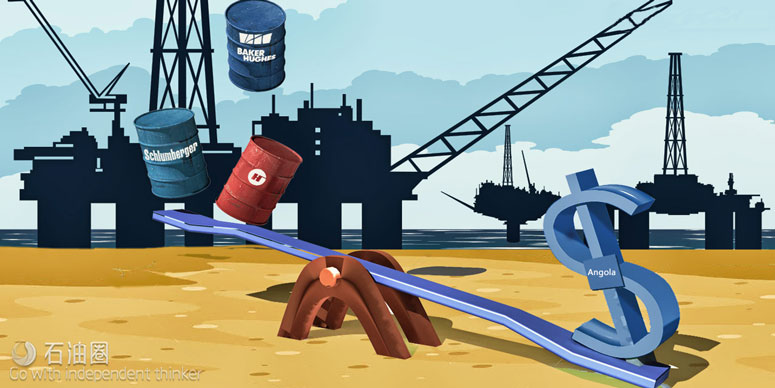TOGY talks to Graeme Taylor, Vice President for Angola at Halliburton, about forecasted stabilisation, onshore potential and the qualities required of a new entrant to the Angolan market. Operating in the country since 1959, Halliburton employs about 1,000 people in activities ranging from cementing, stimulation, well intervention and completion services to field and reservoir modelling, drilling and evaluation. The company has one vessel in Angola and has recently launched an integrated operations base in Malembo.
1、How will the market evolve if the oil price stabilises around USD 50?
Markets react differently. In the US we are seeing a slight increase in the rig count. Generally, there is a lag in pickup of 18 months to two years between Western Hemisphere and Eastern Hemisphere markets. If the elections are calm, companies will likely continue to invest in Angola.
There are currently eight offshore rigs in the country, and this figure will drop to seven by the second quarter of 2017. It is unfortunate that the market will contract a bit more before it bounces back.
While positive signs are coming from Sonangol and its strong new leadership, some important factors should be considered. With the barrel trading around USD 50, onshore exploration could be lucrative, particularly because costs are lower.
On the other hand, exploration becomes more challenging and expensive in deepwater markets. However, customers were sanctioning projects in deepwater some years ago, when the price was around USD 25 or 30 a barrel. If they were able to make it work then, why can’t we make it work now?
The industry understands that it needs to improve efficiency. In the past years there has been inflation throughout a series of areas.
2、Could you describe Halliburton’s activity in Angola over the past year?
A retraction of activity has marked 2016, and almost every company has registered a slowdown. In 2015 the offshore rig count was just below 20, and this year the number of rigs will be in the high single digits.This figure provides a good example of the retraction in the industry.
As drilling stops and new rigs are not commissioned, we lose the chance to sign new contracts, while others have expired.
Moreover, operators in Angola, including Sonangol, are pushing for further discounts in an attempt to reduce costs. It has been a difficult year for the Angolan oil industry.
3、Which contracts are you currently pursuing?
We have about 90 active contracts, with variable lengths that depend on the nature of the product or service we supply. We work with all the operators and are actively bidding on projects that span the services we offer in the country. At the moment our focus is to retain the contracts we currently hold, and then try to grow in new segments in which we can add value through technology or cost-saving strategies such as batch drilling.
We also manufacture equipment that can be adjusted to the design needs of a particular rig before it is transported offshore. We develop this kind of equipment at our tech centres, laboratories and factories, and it helps oil companies save money
In addition, we have just supported an operator in deepwater with a technology called Thermomechanical Cuttings Cleaner, a direct response to the zero-discharge decree that prohibits the discharge of cuttings overboard. For several other operators we have used the expandable liner hanger technology called Versaflex®, which saves them a lot of time when it comes to casing running.
4、Do you have tech centres in Angola?
We have technical advisors, specialist technical managers and laboratory technicians. There is a lot of knowledge available in Angola, but our global manufacturing centres are in Singapore, the US, and Scotland. We build and assemble the finished products inside Angola. We also have the capacity to test and provide repair and maintenance in Angola, in Cabinda, Soyo and Luanda.
5、Why is Angola an important technological area for Halliburton?
There are a large number of IOCs in Angola, including several major operators. In spite of the current rig count, Angola remains a big and relatively busy market, particularly in comparison to markets of other West African countries. Angola seems to remain very important for operators focused on adjusting their costs to the environment of low pricing, becoming more efficient and breaking even.
For Halliburton, Angola is still a big business, and we want to maintain our presence here. If anything, the current market situation is pushing innovation. At Halliburton we are working to better collaborate and engineer solutions to maximize customers’ asset value, particularly in a deepwater market.
6、How has the new base in Malembo impacted operations for Halliburton?
It has been really important for us. It is a big facility that engages the local community through local supply of services and job creation. As we were the first to move out of our former base, and in terms of employee morale, it is a state-of-the-art working area, and that creates pride.
The equipment there is also a lot more efficient and has proven to be more effective in offshore areas.
When companies come to Angola, they must be ready to commit to long-cycle contracts in order to establish themselves in the market. The contracting cycle is multi-year, which makes it difficult for new entrants. Then there is the question of timing. Anybody coming into the country now will struggle significantly, given the current market conditions, and the fact that there is not enough work for all service companies. The size of the incoming company also matters. In order to enter the Angolan market and provide offshore oilfield services, companies must be able to make a big investment.
Moreover, operators do not want to take a chance on a new company in an offshore environment when their rig costs up to USD 1 million per day. Instead, they look for a trustworthy, reliable brand that has experience in Angola. There are also logistical challenges, mainly because rigs are far from support bases, and being present in more than one logistics base requires a lot of financial muscle.
8、What is the potential of Angola’s onshore blocks?
They could complement Angola’s offshore blocks in an interesting way. Furthermore, the development of the newly awarded onshore exploration could be a great creator of jobs, particularly during a time when unemployment has soared due to the decline in offshore activity.
Thus, developing onshore activity has the potential to generate some interesting spillover effects, and could provide a good training ground for new Angolan engineers, as onshore activity could be viewed as a first step on the way to offshore experience.
Regarding available reserves, the fields seem to be fairly mature, some having been drilled and abandoned in the ‘90s. At the same time, other wells may be able to produce, but this would require some initial investment.
9、How has the slowdown in market activity affected workforce composition?
We have taken advantage of the market downturn and have promoted many nationals into senior and management positions. We have also tried to promote some nationals to go and work overseas, to gain experience outside of the country.
Halliburton has a competency programme through which we offer training on specific equipment or technology, prior to its assembly or use offshore. In terms of Angolanisation, about 75% of our staff is Angolan.
10、What is Halliburton’s strategy for the next few years?
We are trying to be collaborative with our customers to develop innovative solutions to better address their problems and increase their production. In order to do so, we ensure that the solutions we offer are competitive, proven and locally available. We are also focused on consolidating and trying to remove cost from our system to remain competitive.
For more interviews, news and market insight on Angola, please click here.


 石油圈
石油圈
